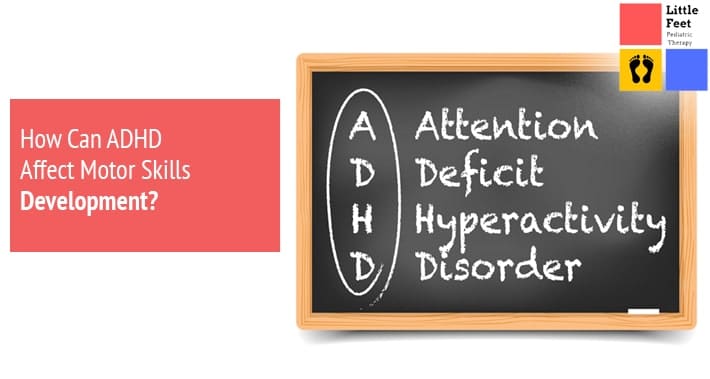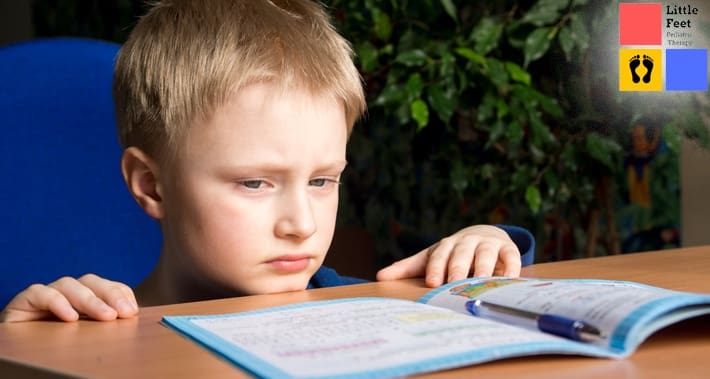
Does ADHD affect your child’s motor skills development?
The short answer to that is yes, it could.
The connection is that ADHD affects your executive functioning ability, which is located on the same pathway in your brain as your motor skills.
It’s common for children diagnosed with ADHD to come across as clumsy or lacking smooth and precise movements.
These physical difficulties can also make it harder for your child to sit still and focus.
The good news is that pediatric occupational therapy for ADHD can help your child improve their motor skills and reduce the severity of their ADHD symptoms.
Now, let’s find out more about how ADHD can affect your child’s motor skills development.
What Is ADHD?
ADHD is short for attention deficit hyperactivity disorder.
It’s a form of neurodivergence – that means it’s a difference in how the brain develops.
Other examples of neurodivergences include autism spectrum disorder, sensory processing disorder, and dyslexia.
With ADHD, it can cause a variety of different symptoms.
For the most part, this includes difficulty focusing, sitting still sitting still for extended periods of time, impulsiveness, and hyperactivity.
This can have a significant impact on your child’s life and their ability to study and learn.
What Are The Main Symptoms Of ADHD?
ADHD symptoms fall under two main areas: hyperactivity or difficulty focusing.
The main symptoms of ADHD depend on the type of ADHD that your child may have.
Each one manifests a little differently.
Let’s take a look at the different types of ADHD and their symptoms.
Symptoms Of Predominantly Inattentive ADHD
Predominantly inattentive ADHD describes people with extreme difficulty focusing, finishing tasks, and following instructions.
If your child has difficulty focusing, then you might notice that they also:
- Have trouble organizing their tasks
- Frequently misplace things
- Find it difficult to ignore distractions around them
- Make frequent mistakes or miss details when studying
This type of ADHD may not receive a diagnosis because these behaviors typically do not disrupt the classroom and can go unnoticed.
It is also more commonly found in children assigned female at birth.
Symptoms Of Primarily Hyperactive Impulsive ADHD
If your child is constantly fidgeting, and unable to wait their turn, then they may have primarily hyperactive impulsive ADHD.
Hyperactivity, or impulsivity, is when your child experiences the need for constant movement.
This makes self control very challenging for them.
If your child has this type of ADHD, they will most likely experience other symptoms like:
- Talking excessively
- Finding it difficult to remain seated
- Difficulty carrying out tasks quietly
- Interrupting others while speaking or playing
Symptoms Of Combined Hyperactive Impulsive And Inattentive ADHD
The most common type of ADHD is a combination of the first two types.
Often, people will have symptoms from both categories and so have challenges both with hyperactivity and focus.
This can often look like a blend of impulsiveness and above average energy levels mixed with an inability to pay attention.
Does ADHD Affect Physical Development?
ADHD brains work differently.
In addition to affecting executive functioning, it can also affect motor skills because your executive functioning is on the same brain pathway as your motor pathway.
The result is that balance and coordination can be an issue, especially for activities that take more concentration.
RELATED: Pediatric Therapy For Poor Balance In Washington DC
Keep reading to find out more about other aspects of physical development that can be affected by ADHD.
1. Poor Handwriting
Many studies have linked poor handwriting with ADHD.
This is most likely because of how ADHD can affect your child’s fine motor skills development.
If your child is having a hard time concentrating or sitting still and seems to rush through tasks, concentrating on writing becomes an extra challenging activity.
RELATED: Occupational Therapy For Handwriting Clinic

2. Poor Balance
Balance is another area that can be affected by ADHD.
This is because children with ADHD may have increased postural sway.
Postural sway is your body’s way of finding its center of gravity while you’re standing, which relies on yourgross motor skills.
Since ADHD affects your child’s motor skills, their balance is affected by this increased postural sway.
You may notice that your child is extra fidgety, clumsy, or unable to stay in line if they have an increased postural sway.
It can be frustrating because they’re swaying to teach their body stability, but this same movement can bother those around them.
3. Poor Athletic Performance
The better control you have over your motor skills, the better you’ll do from an athletic perspective, broadly speaking.
Having ADHD can impair these skills, and make it harder for your child to excel in sports.
This can impact their social skills at school and affect their ability to connect to their classmates if left unaddressed.
Occupational therapy can help improve these skills and their athletic performance as a result of this therapy.
How Can Occupational and Physical Therapy For ADHD Help?
Occupational and physical therapy that focuses on motor skills oriented approaches can be a big help for children with ADHD.
This is because balance training and motor control has been shown to lead to significant improvements in executive functioning.
This is because both skills share the same brain pathway.
This means that improving your child’s balance and motor skills also improves their executive functioning.
Occupational therapy for ADHD can improve your child’s time management skills, organizational skills, impulse control, and prioritizations.
An experienced pediatric occupational or physical therapist will evaluate your child to pinpoint exactly what they are struggling with, and create a treatment plan tailored to their symptoms.
Book Your Appointment With Little Feet Pediatric Therapy Today
Pediatric occupational and physical therapy are great options to consider if your child has ADHD.
Working on improving their motor skills will also benefit their executive functioning, and help to ease many of the symptoms they are experiencing due to their condition.
If you notice that your child has some symptoms that make you think they might have ADHD, book your appointment with Little Feet Pediatric Therapy today.
► 3535 Randolph Rd, Charlotte, NC 28211
► 1331 H St NW Ste 200, Washington, DC 20005
► St. Louis, MO
► Raleigh, NC
Founded in 2019, Little Feet Therapy offers on site pediatric physical and occupational therapy treatments for children from 2 months to 18 years old with physical and developmental concerns. Our clinics focus on providing therapy in a child’s natural setting where your child is in familiar surroundings, it puts their mind at ease and helps them focus more on the work they’re doing with their pediatric therapist. Our therapists will work with your child at your home, at school, at daycare, or another place in the community where they feel most comfortable.